If you’re one of those people who think Wisconsin is a total wasteland of nothing but cows and cheese, then you need to learn more about that place. This rich ecosystem is native to versatile amphibians, like tree frogs. According to the Wisconsin DNR, tree frogs can be found in “a limited number” of counties in the state. Who would have thought?
So if you’re looking for an exciting new animal to add to your life list, why not head on over to Wisconsin and try spotting a tree frog?
Here in this article, you will see the details of Tree frogs in Wisconsin.
6 Tree frogs in Wisconsin
There are actually six different kinds of tree frogs that can be found in Wisconsin. Who knew? If you’re like me, you probably had no idea that these creatures live here. A lot of people live in wisconsin and have never encountered one. So, you can tell they’re really good at hiding.
Next time you’re outdoors, take a closer look at the trees and see if you can spot one of these fascinating creatures yourself!
In the following part, you will see the attributes, habitats, lifespan, diet, etc of the tree frogs of Wisconsin
Spring peeper
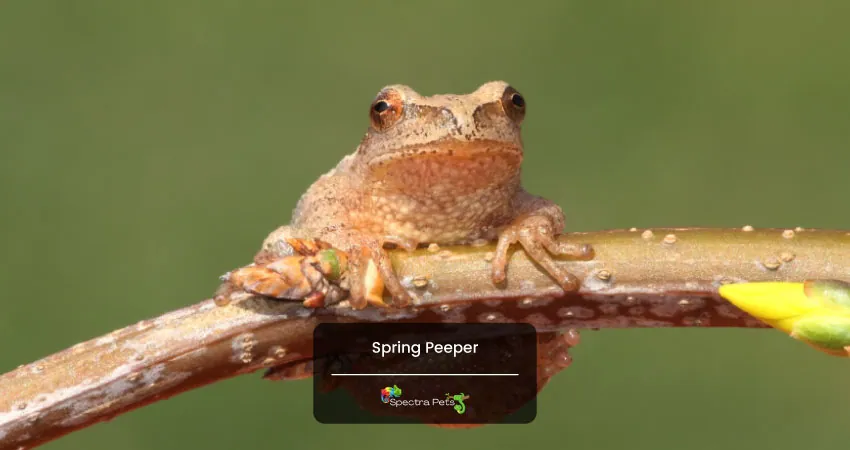
Native to Wisconsin, Indiana, Florida, and Texas, the spring peeper is one of the most common tree frogs on the eastern side of the USA. Though its availability in other states is high, the Wisconsin Frog and Toad Survey found that in Wisconsin this species is declining pretty fast.
These frogs have built-in adaptability for surviving in rough weather. In freezing temperatures, they can smoothly survive just by entering into a hibernation mood. While in high-level temperatures, they protect themselves by hiding under mud and deep water.
In addition to that, these nocturnal species become sexually mature in 2-3 years. And their lifespan in the wild is around 3-4 years. Though their skin has poisonous skin glands, unfortunately, it does not protect them from predators like snakes, salamanders, and birds.
Most probably this tree frog is the loudest frog that can produce 90 decibels of sound for calling. Spring peeper frogs are tiny and the size range would be like 0.08-1.5’’. Though they are nocturnal frogs but tend to hunt for their food in the late afternoon or evening.
Plus, their enlarged toe pads help them immensely to climb vertically on trees. The most notable thing about this frog is the X marking on its backside. They live on eating ants, ticks, caterpillars, mites, beetles, spiders, and flies. The breeding time of this species is the spring season.
Generally, they choose moist forest areas or woodlots. But for breeding, these treefrog wants to be in a wetland-like grassy area close to ponds and lakes. In the winter time, they prefer to stay in tree holes and loose bark, etc.
Gray tree frog
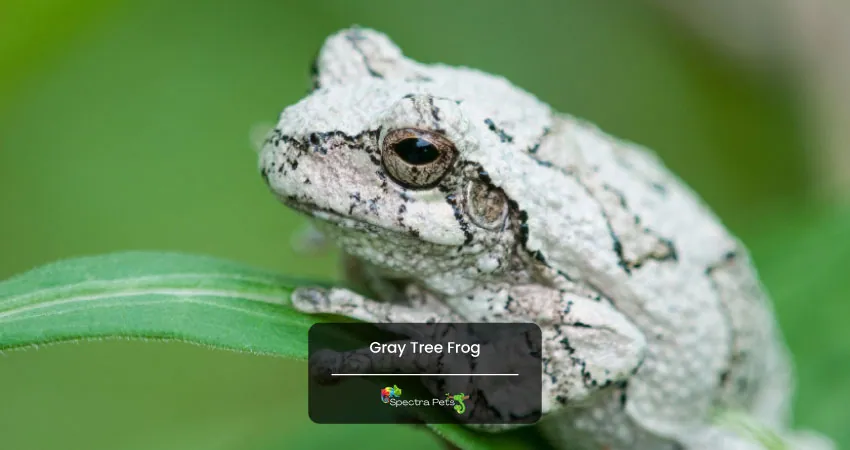
The gray tree frog is a small but mighty creature native to Wisconsin’s woods. Gray tree frogs reach sexual maturity at around 2 years old. They breed in late spring and early summer, typically laying their eggs in tree holes filled with water. Females can lay up to 1800 eggs in one season.
Adult gray tree frogs measure between 1.25’’ and 2.25’’ inches long. As their name suggests, they are typically gray, but their skin color can range from light green to dark brown, olive green, etc. Their skin is covered in small bumps and toxins that make them unpalatable to predators.
The main predators of gray tree frogs are snakes, large insects, and Birds of Prey. These frogs primarily eat insects, though they will also consume spiders, snails, and small reptiles. Gray tree frogs spend most of their time in woods near sources of water, such as wetlands or streams. They are excellent climbers and often sleep on tree branches high off the ground during the day. At night, they sing a loud trill that can last for over 2 minutes. These musical calls help them attract mates as well as ward off potential predators. Fortunately for frog lovers everywhere, the gray tree frog is not currently endangered.
However, like all amphibians, they are sensitive to changes in their environment and could become endangered if their habitat is destroyed by humans. These amazing creatures get a life of around 7-9 years which is pretty high compared to others.
Blanchard’s cricket frog
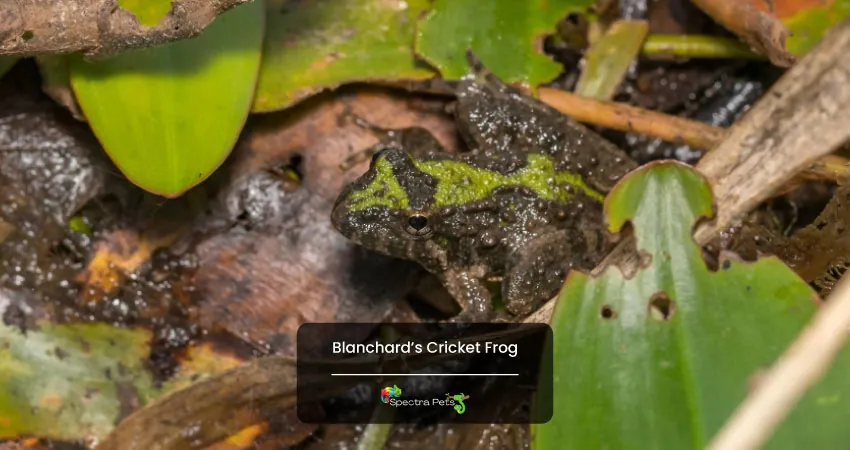
The Blanchard’s cricket frogs are found in the southeastern part of the United States which includes Wisconsin and it’s listed as an endangered frog. This frog is a small to medium-sized frog. It can reach up to 1.5 inches in length.
Skin color can be many but it is usually some shade of green or brown, greenish tan or tan with dark spots on its back. Moreover, this species of tree frog has warty skin. The toes on each foot are webbed which helps the frog swim better. These frogs prefer habitats near permanent bodies of water such as ponds, lakes, marshes, mud flats, and slow-moving streams. During the day, they will hide under rocks or logs near the water’s edge but at night they can often be seen hunting for food.
When it comes to the diet of this frog, it consists mostly of insects and other small invertebrates. Some examples of their prey include crickets, moths, beetles, and ants. The primary predators of Blanchard’s cricket frogs are snakes, large fish, turtles, birds of prey, and mammals such as foxes and raccoons They protect themselves by camouflage; their dark spots help them blend in with their surroundings making it difficult for predators to spot them.
Blanchard’s cricket frogs call to announce their presence to other potential mates during the breeding season which generally lasts from mid-May to mid-August.
Adults of this species typically live for 1-2 years in the wild but a large number die within the first 4 months. Mortality rates are highest during winter when food is scarce and under unfavorable environmental conditions.
Cope’s gray tree frog
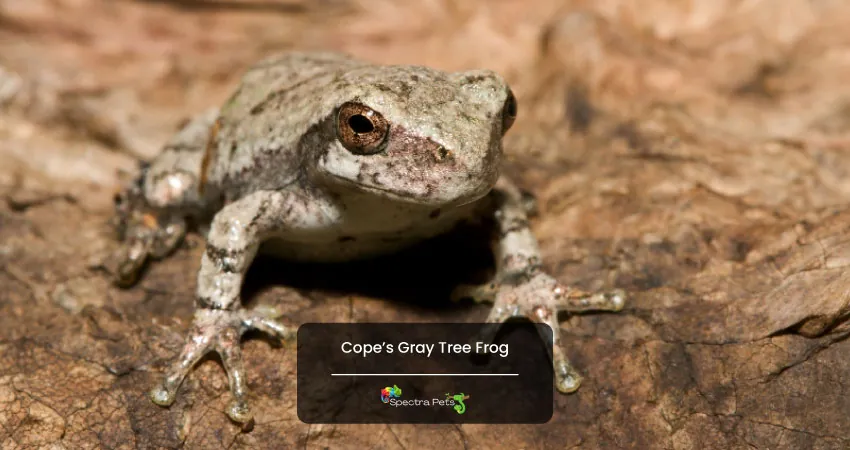
Luckily the population growth and overall presence of Cope’s gray tree frog are good in Wisconsin. These tree frogs are most commonly found in wooded areas near ponds or streams. They prefer areas with plenty of trees and vegetation for cover from predators. Due to their amazing hibernation strategy, they easily pass the winter and emerge in the springtime.
Cope’s gray tree frogs reach sexual maturity at around 2 years of age. Their breeding season lasts from late April to early August. During this time, males will sing to attract mates—a process known as ” advertisement calling.” Females will lay anywhere from 1500-2000 eggs on the surface of ponds or puddles.
In addition to that, the average lifespan of this tree frog in the wild is 2.5 years. However, they have been known to live for up to 7 years in their natural habitat. Cope’s gray tree frogs range in size from 1.25 to 2 inches long. They are one of the larger species of tree frogs.
As their name suggests, Cope’s gray tree frogs are typically gray in coloration. Their toe pads secrete a sticky substance that allows the frog to cling firmly to surfaces—even when wet. The main predators of Cope’s gray tree frogs are snakes, carnivorous birds, and mammals such as shrews, raccoons, and opossums.
Due to their amazing hibernation strategy, they easily pass the winter and emerge in the springtime.
Moreover, the main meal of a Cope’s gray tree frog consists mainly of insects—including moths, crickets, beetles, mosquitoes, and ants—but they will also eat spiders and other small invertebrates.
Boreal chorus frog
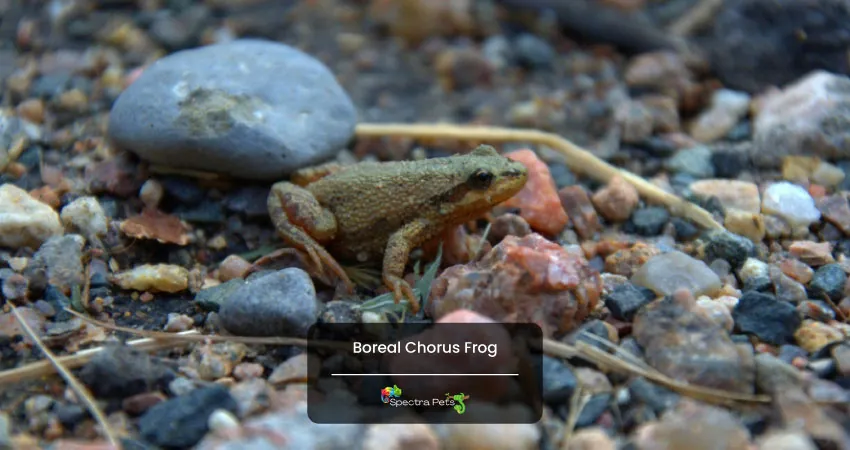
The boreal chorus frog is a tiny shy creature that is not only native to Wisconsin, you will find this nocturnal buddy in Northern America & Canada.
They typically reach sexual maturity between 2-3 years old. The females are usually larger in size than the males. They lay anywhere from 500-1000 eggs which hatch anywhere from late May to early June. The tadpoles transform into frogs anywhere from early to mid-July.
Speaking of the lifespan of a boreal chorus frog, it’s around 3+ years old, but most of them get killed by predators before 2 years old. As for size, these frogs only grow to be about 0.75-1.4’’. Their skin color can be brown, olive green, greenish gray, reddish, or tan and it is smooth with dark patches on their back.
Plus, these frogs store enough fat in their bodies during the fall to get them through winter hibernation under -40 degrees Fahrenheit. When it’s time to hibernate, they will dig themselves into the ground where they will spend the winter months until it’s time to mate again the following spring.
In terms of eating, they eat a huge amount of insects per day. The diet of a boreal chorus frog mainly consists of insects such as earthworms, moths, flies, beetles, slugs, centipedes, ants, and spiders. Their predators mainly consist of snakes, larger fish species (pickerels & pike), and larger amphibians.
Final words
Hope you learned quite a lot about the cute little tree frogs in Wisconsin. We need to do everything we can to help even small creatures thrive in our ecosystems so that the food chain stays smooth and balanced.
Now every time you go for an outdoor walk you will see Wisconsin a bit differently.
Tree Frogs Found in the Nearby States of Wisconsin:
